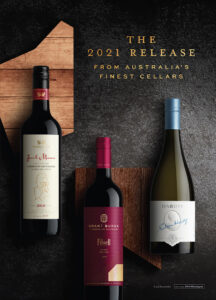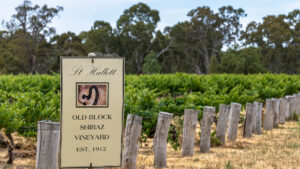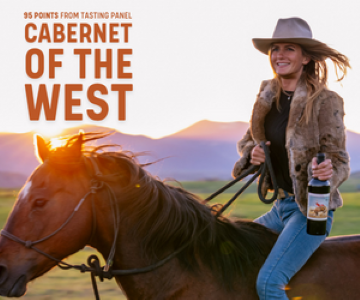TASTING ACCOLADE’S AUSTRALIAN VINTAGE RELEASES WITH NIGEL SNEYD
Accolade Fine Wines’ portfolio of Australian wines dates back to 1853, when its oldest brand, Thomas Hardy’s and Sons, was founded. The collection was curated with a goal of maintaining the identity and integrity of each of its well-known labels while highlighting the incredible array of terroir and talents behind them. While Accolade was formed as recently as 2018, with a global volume of approximately 27 million cases, the company has already earned its place as a respected player in the industry.
Accolade’s winemaking team is led by Nigel Sneyd, MW, who serves as director of global wine, quality, and compliance. In addition to studying wine in Australia and France, he also held key positions in London and California before returning to Australia and joining Accolade in 2019. During a private Zoom master class, Sneyd presented The Tasting Panel with a portfolio of luxury wines from Accolade’s Global Vintage Release Program across a diverse range of varietals, styles, and price points. The bottlings—crafted from select vineyards in the Barossa Valley, McLaren Vale, Margaret River, Frankland River, and Tasmania regions—each showcased the incredible diversity of their origins.
Sneyd started with the 2018 Hardy’s Eileen Hardy Shiraz ($100), named to honor Eileen Hardy’s 80th birthday in 1973. (Eileen took over running Hardy’s in 1938 when her husband, Tom, was killed in a plane crash.) Crafted with single-vineyard fruit from McClaren Vale, this dark-purple Shiraz features aromas of blueberry and licorice, and on the palate, it delivers soft yet juicy flavors of dark fruit and black pepper with hints of licorice and leather. “It is a really good wine to enjoy with a few friends,” Sneyd said.
 Next up was the 2019 Eileen Hardy Chardonnay ($100), a blend of fruit from Margaret River, Tasmania, Yarra Valley, and Tumbarumba. A complete departure from California Chardonnay, “it has that unmistakable Australian acidity,” Sneyd noted. It’s lightly citrusy, showing peach, other stone fruits, and just enough oak to impart a creamy, elegant character.
Next up was the 2019 Eileen Hardy Chardonnay ($100), a blend of fruit from Margaret River, Tasmania, Yarra Valley, and Tumbarumba. A complete departure from California Chardonnay, “it has that unmistakable Australian acidity,” Sneyd noted. It’s lightly citrusy, showing peach, other stone fruits, and just enough oak to impart a creamy, elegant character.
Staying in the Hardy’s family, 2017 Thomas Hardy Cabernet ($100)—honoring the company’s namesake—was introduced by Sneyd as “unapologetically Cabernet.” Created with fruit from vineyards in the Coonawarra and Margaret River regions, this classic Aussie Cab boasts dark fruit and oak with a bit of spice. “This wine is good example of how having a diverse supply of grapes across the country has proven to be helpful when there is a fire somewhere, which there almost always is,” Sneyd added, noting that it might be a good lesson for California vintners.
Shifting to the Grant Burge wines, the 2019 Filsell Old Vine Shiraz ($40) features 100% Shiraz sourced from vines over 100 years old and exhibits the acidity and tannin structure typical of Southern Barossa; it’s plush and rich on the palate, with notes of dark fruit and chocolate. And while Sneyd recommends cellaring it for five to ten years, it’s delicious enough to drink now.
The 2019 Grant Burge Holy Trinity ($58) blend of Grenache, Shiraz, and Mourvèdre from the Barossa is a great example of why GSM has gained popularity among U.S. consumers, as it overdelivers for the price point. It melds flavors of red fruit, blackberry jam, and vanilla with the familiar black pepper of Shiraz and the tannins of Mourvèdre, exhibiting varietal diversity that Sneyd said he misses from California. “Australia has plenty of Shiraz and Cabernet,” he notes, “but not much more.”
Sneyd then moved on to the St Hallet wines, beginning with the 2019 St Hallett Blackwell Shiraz ($58), also from the Barossa. It’s named after Stuart Blackwell, a longtime winemaker for the label, which refers to the bottling as its “most obviously Barossan wine”; Sneyd, meanwhile, described it as “angular and tannic, with chewy tannins.” Complex and rich, it delivers aromas of black cherry and a touch of oak with flavors of dark fruit, plum, and cocoa.
The most expensive of the four Shiraz wines presented during the master class, the 2017 St Hallett Old Block Shiraz ($130) was sourced from premier blocks in select vineyards in the Barossa and Eden valleys; the vines range in age from 80 to 150 years old. Balanced and full-bodied, it shows red fruit and lavender on the nose as well as dark cherry and blueberry pie on the palate.
Next up was the single-vineyard 2019 Houghton Jack Mann Cabernet Sauvignon ($89) from the Frankland River region; the rich wine is named after the late Jack Mann, who served as the label’s winemaker for five decades and was referred to as the “Grand Vin.” Its inky hue is mirrored on the palate by notes of blackberry and black cherry with a touch of menthol.
The final expression in the lineup was the single-vineyard 2019 Houghton Gladstones Cabernet Sauvignon ($60), named for award-winning agriculturist and viticulturist John Gladstones, an expert on the Margaret River region from which the wine is sourced. Dark in color, it delivers aromas of plum and tobacco with flavors of currant and chocolate.

According to Aaron Ridgway, regional general manager–Americas for Wine Australia, the average value of Australian wine exports to the U.S. is at its highest point since 2008–2009. “We’re seeing significant growth above $10 at the regional level, particularly for Barossa, Eden Valley, and Tasmania,” Ridgeway noted. “Consumer interest in premium, regional wines from Australia is strong, as we’ve seen from recent sponsored campaigns with wine.com and Vivino.” All of this is good news for Accolade and its fellow producers on the continent.
When asked about the current vintage at the end of the tasting, Nigel said that 2021 is fantastic in terms of both quality and volume, calling it “one of these rarities you get once every 20 years.” Well, there is something we can all look forward to.

